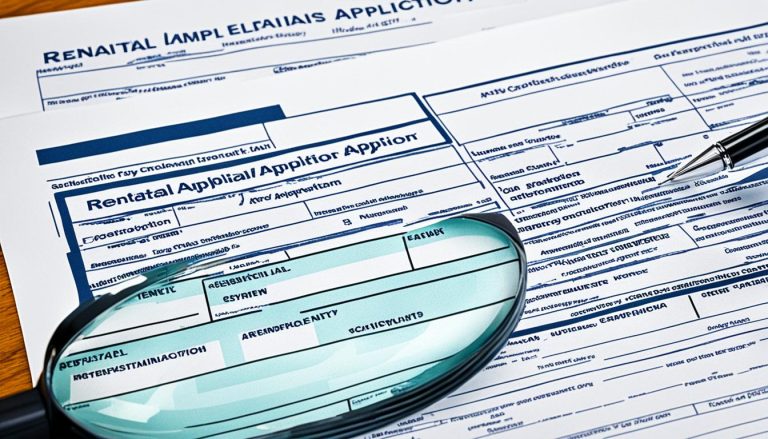Welcome to our guide on common law tenancies and your rights as a tenant. Whether you’re renting a property or considering becoming a landlord, it’s essential to understand the fundamentals of common law tenancies. In this article, we’ll explore the key aspects of common law tenancies, from tenancy agreements to landlord rights and tenant responsibilities.
What is a Common Law Tenancy Agreement?
A common law tenancy agreement is a contract between the tenant and landlord that outlines the rights and responsibilities of both parties. It may be verbal or written, but it’s best to have a written agreement. The agreement should include details such as the names and addresses of the tenant and landlord, the start date of the tenancy, whether other people are allowed to live in the property, the duration of the tenancy (fixed term or ongoing), rent amount and frequency, included services, notice period for ending the tenancy, and landlord’s obligations for repairs. Even without a written agreement, both tenant and landlord have legal obligations implied by law, such as the landlord’s responsibility to carry out basic repairs and the tenant’s obligation to use the property properly.
A common law tenancy agreement serves as a valuable tool to clarify and protect the interests of both the tenant and the landlord. It ensures that all parties are aware of their rights and obligations, reducing the risk of disputes and misunderstandings. While verbal agreements are legally binding, they can be challenging to enforce without written documentation. A written common law tenancy agreement provides a clear record of the terms agreed upon, minimizing the potential for future disagreements.
Benefits of a Written Common Law Tenancy Agreement:
- Clarity and Transparency: A written agreement clearly states the expectations and responsibilities of both the tenant and landlord, leaving no room for misunderstandings.
- Legal Compliance: A written agreement ensures that both parties adhere to legal requirements, such as those outlined in housing laws and regulations.
- Dispute Resolution: In the event of a dispute, a written agreement provides a solid foundation for discussion and resolution, potentially avoiding costly litigation.
- Protection of Rights: A written agreement safeguards the rights and interests of both the tenant and landlord, ensuring fair treatment throughout the tenancy.
It is important for both tenants and landlords to carefully review and understand the terms of a common law tenancy agreement before signing. If either party has any concerns or questions, it is advisable to seek legal advice or consult with a housing professional to ensure that the agreement aligns with legal requirements and provides adequate protection for all parties involved.

| Tenant’s Obligations | Landlord’s Obligations |
|---|---|
| Pay rent on time | Carry out basic repairs |
| Use the property properly | Maintain the property in a habitable condition |
| Provide notice to end the tenancy | Respect the tenant’s privacy |
| Take care of the property | Ensure the property meets safety standards |
| Negotiate changes to the agreement | Follow proper eviction process if necessary |
The Rights and Obligations of Common Law Tenants
As a common law tenant, you have certain rights and obligations that govern your tenancy agreement. Understanding these rights and obligations is crucial to ensure a smooth and harmonious landlord-tenant relationship. Let’s take a closer look at what you can expect as a common law tenant:
1. Exclusive Possession
One of the key rights of a common law tenant is the right to exclusive possession of the property. This means that you have the right to privacy and the freedom to enjoy the property without interference from others. Your landlord cannot enter the property without your permission, except in cases of necessary repairs or emergencies.
2. Repairs
When it comes to repairs, the responsibility lies primarily with the landlord. As a common law tenant, you have the right to live in a property that is safe and fit for habitation. The landlord is obligated to address any necessary repairs promptly and maintain the property in a reasonable condition.
3. Deposit
When you enter into a common law tenancy, your landlord may request a security deposit. The deposit amount should not exceed two months’ rent. This deposit is held as security against any damage or unpaid rent and should be returned to you at the end of the tenancy, minus any deductions for legitimate reasons.
4. Permission from Landlord
As a common law tenant, you need to seek permission from your landlord for certain actions. This includes subletting the property, allowing someone else to move in, running a business from the property, or making significant changes to the property. It is important to have written consent from your landlord for these activities to avoid any disputes later on.
5. Ending the Tenancy
If you wish to end your common law tenancy, proper notice is required. The notice period may vary depending on the length of the fixed term. It is advisable to use a written letter template to provide clarity and ensure that you comply with the notice requirements. If you want to end the tenancy before the fixed term ends, you would need to obtain agreement from your landlord. Otherwise, you can only end the tenancy at the expiry of the fixed term. The tenancy agreement may contain specific provisions for ending the tenancy, and landlords must follow the correct eviction process if you breach the agreement.
| Rights | Obligations |
|---|---|
| Exclusive Possession | Permission from Landlord |
| Repairs (Landlord’s responsibility) | Ending the Tenancy (Proper notice) |
| Deposit (Up to two months’ rent) |
Understanding your rights and obligations as a common law tenant is essential for a peaceful and stress-free tenancy. By knowing what you are entitled to and what is expected of you, you can ensure a positive and mutually beneficial relationship with your landlord.
Differences Between Common Law Tenancies and Assured Shorthold Tenancies
Common law tenancies in England differ significantly from assured shorthold tenancies (ASTs). While ASTs are covered by the Housing Acts, common law tenancies are not, resulting in distinct rights and obligations for tenants and landlords. Let’s explore the key differences between these two types of tenancies.
Tenure and Statutory Protection
One of the significant distinctions between common law tenancies and ASTs is the security of tenure and statutory protection provided to tenants. AST tenants have greater security of tenure and enjoy statutory continuation rights, meaning they have a guaranteed right to stay in the property for a specific period. On the other hand, common law tenancies offer tenants less security and do not provide the same level of statutory protection.
While common law tenants benefit from certain statutory protection, such as the right not to be evicted without a court order and protection under the Unfair Terms in Consumer Contracts Regulations 1999, they may not enjoy the same advantages as AST tenants. For example, common law tenants may not benefit from deposit protection schemes that apply to AST tenants.
Eviction Process and Notice Periods
The eviction process for common law tenancies differs from ASTs. The rules for serving notices and obtaining possession orders are not the same for both types of tenancies. Common law tenancies may require a longer notice period for eviction compared to ASTs, and the procedures involved may also differ.
Legal Coverage and Framework
ASTs benefit from the legal coverage and framework provided by the Housing Acts, ensuring that both tenants and landlords have specific rights and obligations. These acts provide clear guidelines on matters such as rent increases, eviction procedures, and other tenant rights and responsibilities.
On the other hand, common law tenancies operate outside the scope of the Housing Acts, placing greater emphasis on the agreement between the tenant and landlord rather than predefined legal requirements. While common law tenancies still have some legal rights and obligations, they are primarily determined by the agreement between the parties.

Common Law Tenancies for High-Rent Properties and Corporate Lettings
Common law tenancies aren’t limited to standard residential properties. They can also be applied to high-rent properties with rental rates that exceed £100,000 per year. In these cases, the rights and obligations of both landlords and tenants are governed by common law tenancy principles and are subject to specific agreements tailored to the unique circumstances of high-rent tenancies.

Joint tenancies where the combined rent of all sharers exceeds the £100,000 threshold also fall under the scope of common law tenancies. This means that if multiple tenants are leasing a property together and their combined rent exceeds £100,000 annually, they will be subject to common law tenancy principles and regulations.
In addition to high-rent properties, common law tenancies are frequently utilized for corporate lettings. Corporate lettings occur when a company rents a property for the purpose of providing residential accommodation to their employees. In these arrangements, the company assumes liability for the rent and other associated costs.
The landlord-tenant relationship in corporate lettings is governed by common law tenancy principles, including the obligations and rights of both parties. However, due to the corporate nature of these arrangements, there may be additional clauses and terms included in the tenancy agreement that are specific to the corporate lease.
It’s important for both landlords and tenants involved in high-rent properties and corporate lettings to be aware of their respective rights and obligations under common law tenancies. Clear and comprehensive tenancy agreements should be put in place to ensure a smooth and mutually beneficial landlord-tenant relationship.
How to End a Common Law Tenancy?
Ending a common law tenancy can be done through various means, either by mutual agreement between the tenant and the landlord or through the expiration of the fixed term. However, it is crucial to follow the proper procedures and legal requirements to ensure a smooth transition. Below are some essential steps to consider when ending a common law tenancy:
- Giving Proper Notice: The tenant should provide the landlord with a written notice, clearly stating their intention to end the tenancy. The notice period should be in accordance with the terms of the tenancy agreement or, if no specific period is mentioned, it should be reasonable and agreed upon by both parties. This allows the landlord to make necessary arrangements for finding a new tenant.
- Reaching a Mutual Agreement: In some cases, both the tenant and the landlord may agree to end the tenancy before the fixed term expires. This can be done through open communication and negotiation. It is advisable to have any agreements regarding the early termination of the tenancy in writing to avoid any potential misunderstandings in the future.
- Addressing Issues: If there are any breaches of the tenancy agreement or disputes during the tenancy, it is essential to address them before proceeding with the termination process. The landlord may have the right to terminate the tenancy if there are significant breaches, but it is advisable to seek legal advice to ensure compliance with the law.
- Enforcing Eviction: If the tenant fails to vacate the property or disputes the termination, the landlord may seek a possession order from the court to enforce eviction. This process typically involves attending a court hearing where the landlord needs to provide sufficient evidence and legal grounds for the eviction. It is important to note that the court will carefully consider the circumstances and rights of both the tenant and the landlord in making a decision.
Remember, landlords must follow legal requirements and cannot evict tenants without proper notice and due process. Ending a common law tenancy should be approached with care and in compliance with the law to avoid unnecessary disputes or legal complications.
| Procedure | Requirements |
|---|---|
| Giving Notice | Written notice from the tenant, specifying the intended date of termination and complying with the agreed notice period. |
| Mutual Agreement | Clear communication and agreement between the tenant and the landlord on the termination of the tenancy before the fixed term expires. |
| Addressing Issues | Resolving any breaches or disputes during the tenancy before proceeding with the termination process or seeking legal advice if necessary. |
| Eviction Enforcement | Seeking a possession order from the court if the tenant fails to vacate the property or disputes the termination. |
Statutory Protection for Common Law Tenants
Even though common law tenancies are not regulated by specific laws, tenants still have access to certain statutory protections (statutory protection). These protections ensure that tenants are treated fairly by their landlords and have rights that they can rely on (unfair terms).
One key aspect of statutory protection for common law tenants is the repairing obligations imposed on landlords (repairing obligations). Under the Landlord and Tenant Act 1985, landlords are legally required to maintain the property and carry out necessary repairs to ensure it remains in a habitable condition. This means that landlords have a responsibility to address issues such as faulty plumbing, electrical problems, or structural damage (fit for human habitation).
Common law tenants also benefit from certain provisions under the Unfair Terms in Consumer Contracts Regulations 1999 (unfair terms). These regulations aim to protect tenants from unfair and unreasonable terms and conditions in their tenancy agreements. Landlords must ensure that the terms of the agreement are clear, transparent, and do not put the tenant at a significant disadvantage.
It’s important to note that while common law tenants have statutory protection, this level of protection may differ from that enjoyed by tenants under assured shorthold tenancies (ASTs) (statutory protection). AST tenants often have access to additional rights and remedies under housing legislation, such as the protection of their deposit in a government-approved scheme.
Overall, while common law tenants may not have the same comprehensive statutory protection as AST tenants, they still have legal safeguards that ensure their rights are respected. Landlords must fulfill their repairing obligations, and tenants are protected from unfair terms in their tenancy agreements. It’s crucial for both landlords and tenants to understand these rights and obligations to ensure a harmonious and fair tenancy experience.
Conclusion
In conclusion, a common law tenancy is a type of tenancy that is not regulated by specific statutory laws. Instead, the rights and obligations of both landlords and tenants are determined by the agreement made between them, whether it is verbal or written. Common law tenants enjoy certain rights, including exclusive possession of the property, the landlord’s responsibility for repairs, and protection against eviction without a court order.
However, it is important to note that common law tenancies do not offer the same level of security of tenure and statutory protection as assured tenancies. Therefore, both landlords and tenants should have a clear and comprehensive tenancy agreement in place to outline their respective rights and obligations, thus avoiding potential disputes or misunderstandings.
FAQ
Can you evict someone on a common law tenancy?
Yes, it is possible to evict someone on a common law tenancy, but the process may differ from a traditional eviction. A common law tenancy does not offer as much protection for the tenant as an assured or secure tenancy, and therefore, it may be easier to remove a tenant in this type of arrangement.
What is a breach of a common law tenancy?
A breach of a common law tenancy refers to any violation or failure to comply with the terms and conditions set forth in a tenancy agreement between a landlord and tenant. These terms can include payment of rent, maintenance of the property, and responsibility for damages. Breaching these conditions may result in legal action by either party and potentially lead to eviction. As such, it is important for both landlords and tenants to fully understand their rights and responsibilities under a common law tenancy to ensure a smooth and successful tenancy agreement.
Can a common law tenancy become periodic?
Yes, a common law tenancy can become periodic. This typically happens when the initial fixed term of the tenancy ends, and both the landlord and tenant agree to continue with the tenancy on a month-to-month or week-to-week basis. However, it is important to note that this type of tenancy does not offer as much protection for tenants as an assured shorthold tenancy under the Housing Act 1988. It is always best to have a written agreement in place to clearly outline the terms and conditions of the tenancy, no matter what type it may be.






